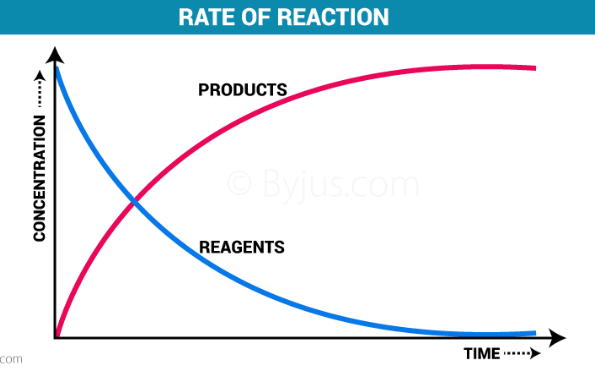
Rate of reaction = the speed at which a chemical reaction proceeds
Reactant → Product
A + B → C + D
Reactant reducing rate = Product increasing rate
To know the rate of reaction, measure:
- the rate of reactant reducing
- the rate of product increasing
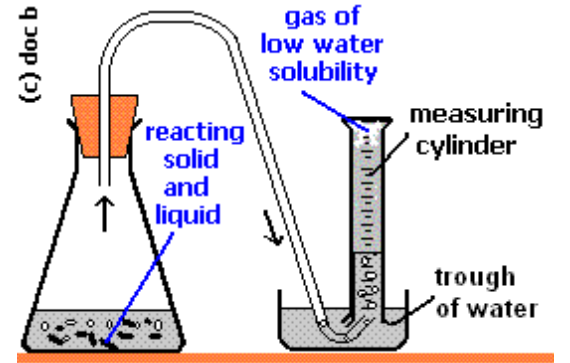
- gas has to be insoluble in water
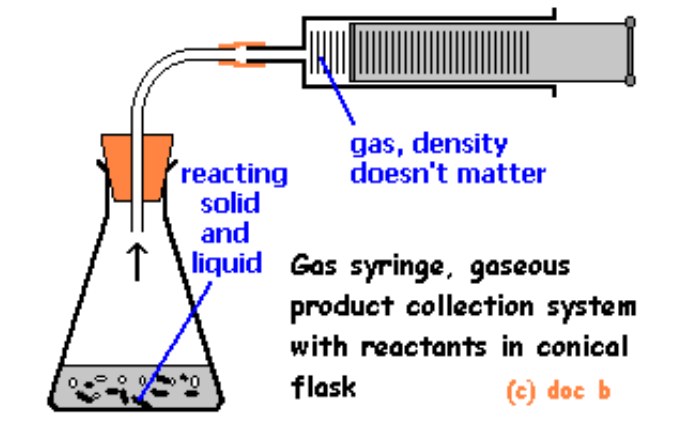
Notice: If too much gases come out, the plunger can go out (or) syringe may break.
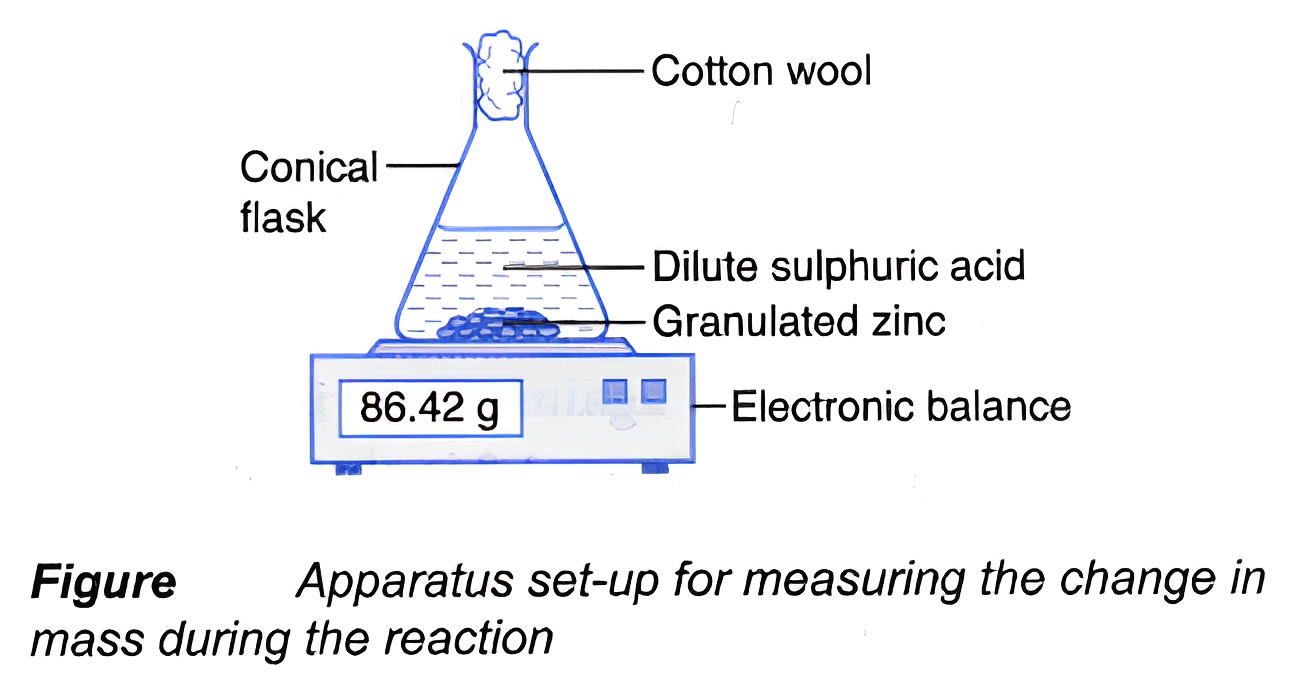
- this method is for carbon dioxide (CO2)
- can’t be used for Hydrogen
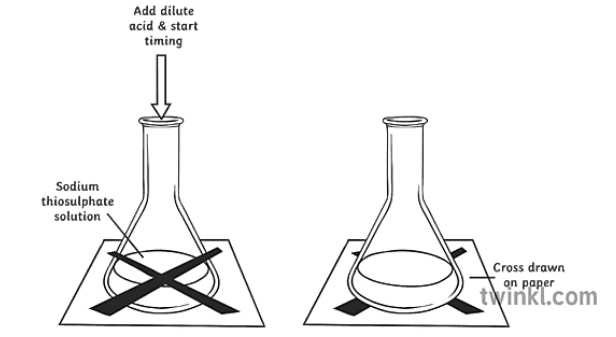

- Never a straight line
- A curve
- The reaction is the fastest at the start (the line is the steepest)
- When you get the same amount of gas for 3 or more consecutive times, the reaction has stopped.
In a chemical reaction :
- Particles of reactant have to collide with each other with enough energy to react together
At the start of a reaction :
- Lots of particles haven’t reacted yet
- Collisions happen frequently
- Many products formed
Later :
- Only a few unreacted particles left
- Collisions decrease
- Less products formed

Anomalous result = a result that doesn’t fit in with the pattern of other results
What causes anomalous results?
- Human error
- Inadequate controlled variable
- Inappropriate measuring equipment
How to check if the result is anomalous or not?
- Repeat the experiment
Tip: If you want to know the exact value of a particular point on graph, use the tangent method.
Collision – means particles collide
When particles collide, heat energy comes out from friction.
When that heat energy is strong enough, the particles start to react.
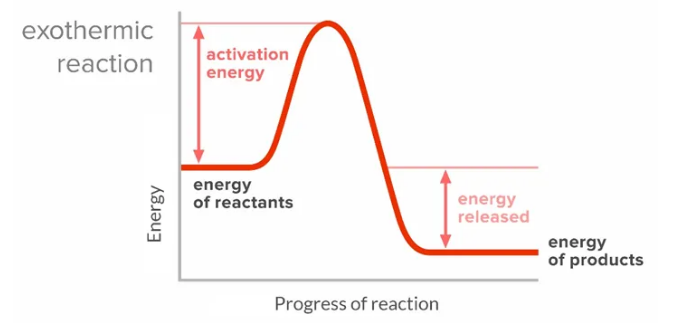
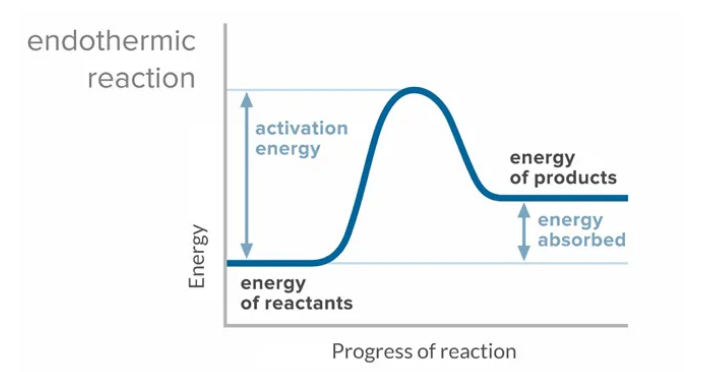
Magnesium block → doesn’t burn
- Most atoms are inside the block, away from oxygen
- Only a few atoms on the surface can react
Magnesium ribbon → react very quickly
- Most atoms are on the surface and react
Magnesium powder → burns faster than ribbon
- Has even larger total surface area
- Most atoms are available to react
* Small pieces of solid always react together faster than larger pieces
* Everytime a solid lump is cut into pieces, its total surface area increases.

An increase in total surface area → An increase on rate of reaction
- When surface area of a reactant increase, more particles exposed to other reactant
- Greater chance of particles colliding
- More particles collisions per second
Calcium carbonate + Hydrochloric Acid → Calcium Chloride + Water + Carbon Dioxide
CaCO3 + 2HCl → CaCl2 + H2O + CO2
Controlled variables:
- Mass of calcium carbonate
- Mass and concentration of acid
- Temperature
- Pressure
Independent variable – Total surface area of calcium carbonate
Dependent variable – Rate of reaction
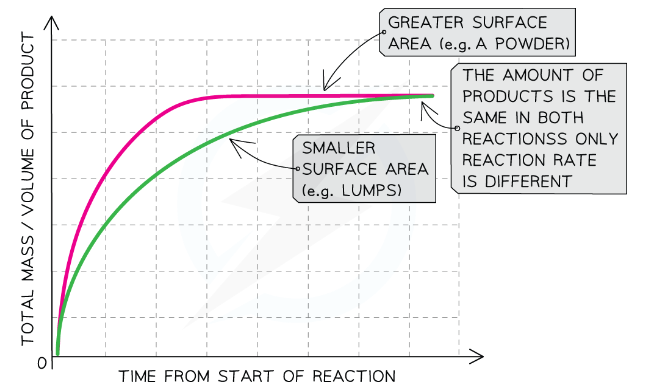
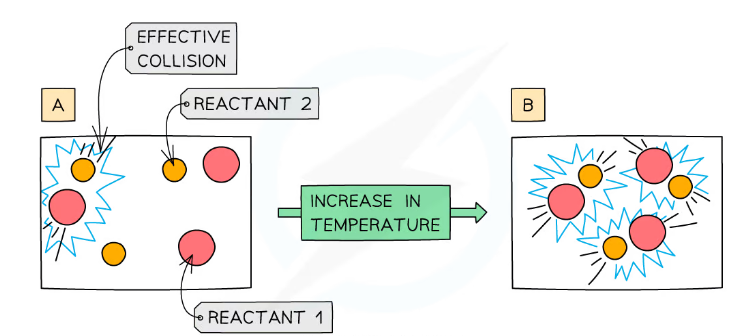
Higher temperature → Faster rate of reaction
- When temperature increase, more heat energy is given
- Particles move faster
- More frequent collisions between the particles
- Faster rate of reaction
Sodium Thiosulphate + Hydrochloric Acid → Sodium Chloride + Water + Sulfur + Sulphur Dioxide
Na2S2O3 + 2HCl → 2NaCl + H2O + S + SO2
Method – measure how quickly a precipitate is formed by observing the 'cloudiness' of a liquid (use this method because sulfur produced from the reaction is insoluble in water, it forms a precipitate so the mixture becomes cloudy)
Precipitate = insoluble ionic solid products of a reaction, formed when certain cations and anions combine in an aqueous solution
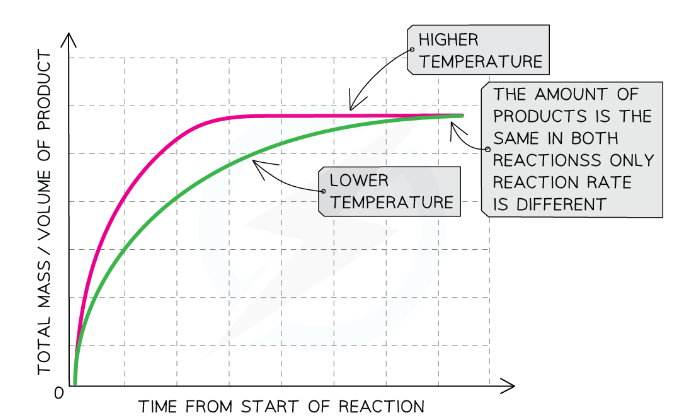
Controlled variables:
- Mass and surface area of sodium thiosulphate
- Volume and concentration of hydrochloric acid
Independent variable – Temperature of one of the reactants
Dependent variable – Rate of reaction
* Don’t get any more products, get the same amount of product, but in less time
* Rate of reaction doubles for every 10°C
Higher concentration → Faster rate of reaction (sometimes more product)
* If the concentration of a reactant is increased, more products will be formed faster as long as there is enough of other reactants.
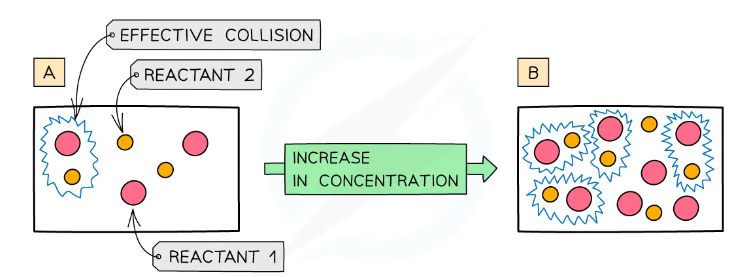
- Higher concentration of a reactant means more particles of a reactant in a given amount of space
- More frequent collisions between the particles
- Faster rate of reaction
Magnesium + Hydrochloric acid → Magnesium chloride + Hydrogen
Mg + 2HCl → MgCl2 + H2
Controlled variables:
- Volume of hydrochloric acid
- Surface area and mass of magnesium
- Temperature
Independent variable – Concentration of the acid
Dependent variable – Rate of reaction
Method: Downwards water displacement
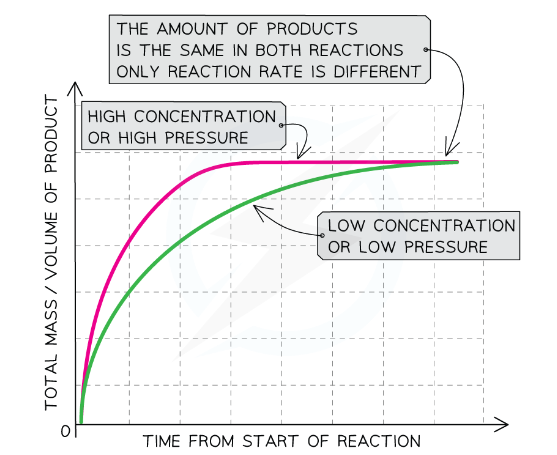
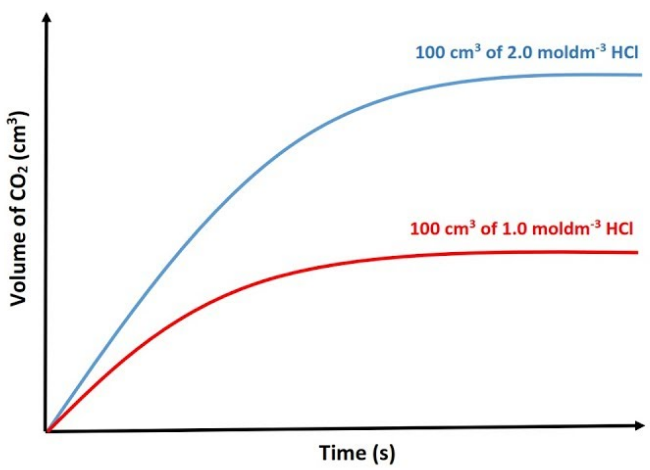
Catalyst = a substance that speeds up a reaction but remains unchanged at the end of the reaction (still react without it but make the reaction faster)
- Some catalyst can be used over and over again
- Used to speed up the reactions in industrial processes as it’s cheaper
Hydrogen peroxide → Water + Oxygen
2H2O2 → 2H2O + O2
Hydrogen peroxide will decompose into water and oxygen after a long time But it takes too long so we use catalysts.
Magnesium oxide – a catalyst (insoluble in water)

- Place the same amount of hydrogen peroxide in test tubes.
- Leave one test tube with hydrogen peroxide only to use as a comparison.
- Add a small amount of magnesium peroxide to the other test tube and small pieces of fruits and vegetables to the other test tubes.
- Observe the reactions (you will see bubbles of oxygen coming out) and record your observations.
* If you recover the Magnesium oxide and put it in another text tube, it still works.
Enzymes:
- biological catalysts
- speed up most of the reaction that happen inside your body (eg. the breakdown of molecules of food so that they can be absorbed into blood)
Catalase – an enzyme in all living cells that speeds up the breakdown of hydrogen peroxide
Hydrogen peroxide is formed as a waste product in many reactions in the cells of plants and animals. It is poisonous and can kill the living cells if not broken down into water and oxygen quickly.
That’s why all the fruits and meat can break down the hydrogen peroxide quickly – because they have catalase in their cells.
Biological washing powder = washing powders that contains enzymes
Internal combustion happens inside the cars. Oxygen and petrol burn inside the engine and use the energy produced to move the car motor.
But sometimes, when there isn’t enough oxygen
- Carbon monoxide (CO) is produced
> very toxic
> can kill people from carbon monoxide poisoning if CO combines with the red blood cells inside our bodies
- Soot is produced
> soot = impure carbon particles, black and powdery
C8H18 + O2 → CO2 + H2O
→ CO + H2O
→ C + H2O
Therefore, use catalytic converters.
Catalytic converter = an emission control device that convert harmful exhaust gases into less harmful ones as the gases pass by
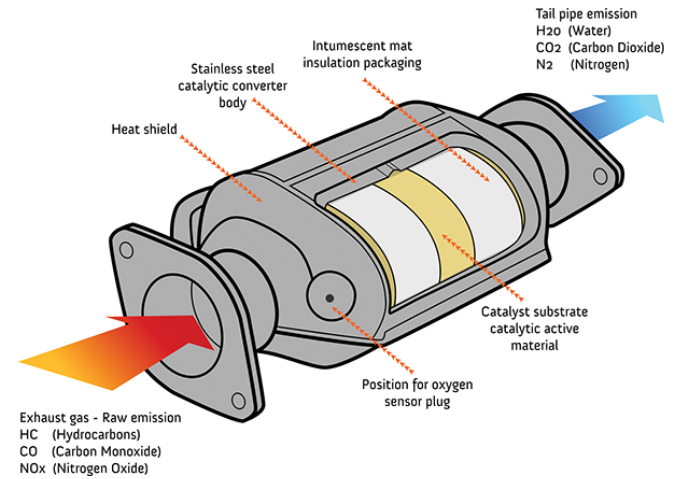
(1) Temperature
(2) Surface Area
(3) Amount of reactant
(4) Concentration
(5) Pressure
(6) Catalyst (cheapest way to increase rate of reaction because it can be reused many times)
Nitrogen + Hydrogen ⇌ Ammonia
N2 + 3H2 ⇌ 2NH3
Nitrogen and hydrogen react and produce ammonia. At the same time, ammonia decomposes back to nitrogen and hydrogen. Therefore, it is hard to handle this reaction.
Surface area – no need to consider
Concentration – no need to consider
Amount of reactant - add as soon as the amount becomes low
Temperature - above 400°C
Pressure - give around 200 atm (atmospheric pressure)
Catalyst - add